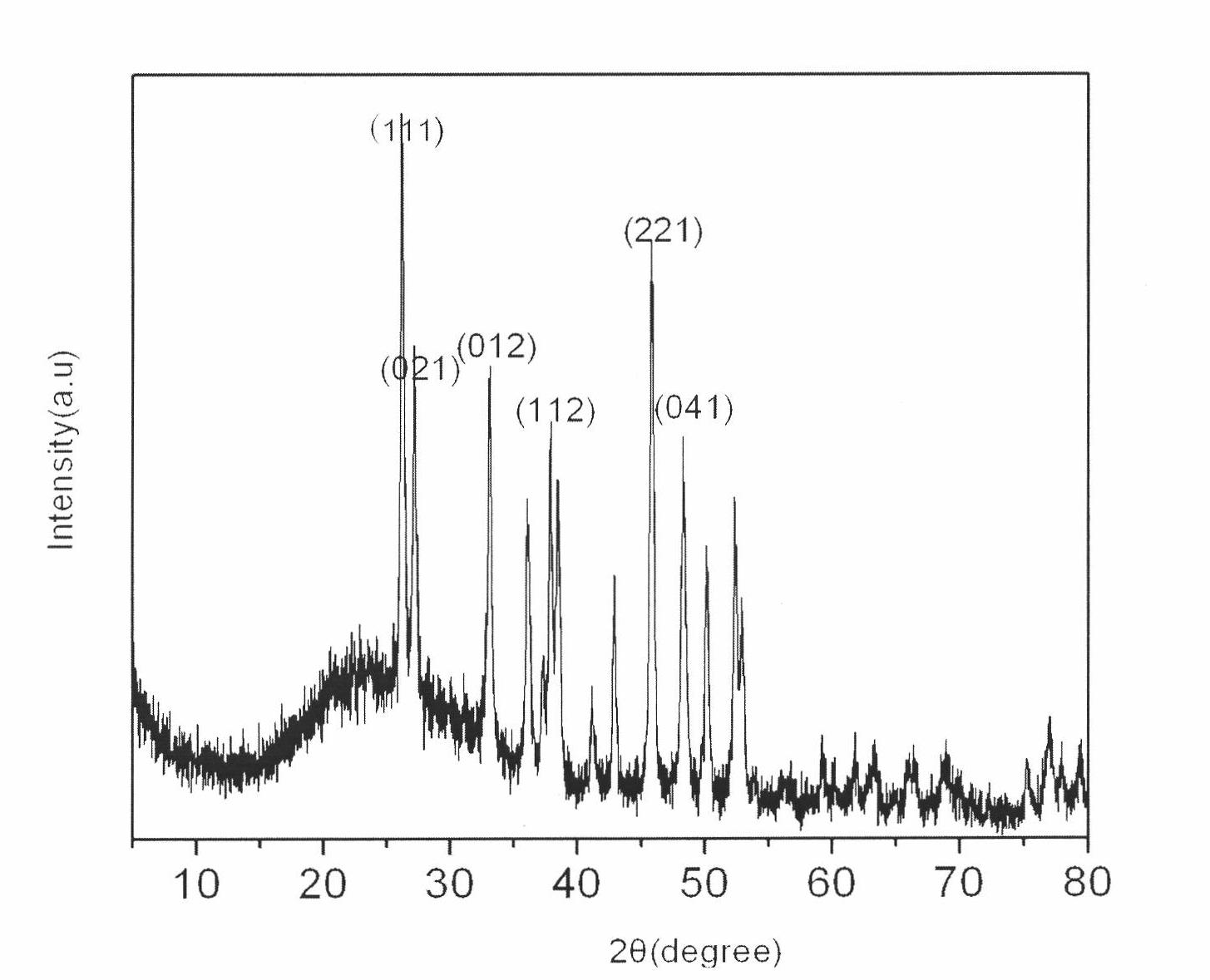Method for preparing calcium carbonate with controllable topography by using calcium sulfate
A technology of calcium carbonate and calcium sulfate, which is applied in the direction of calcium carbonate/strontium/barium, etc., can solve the problems such as difficult to control the shape, and achieve the effect of uniform shape control, cheap and easy-to-obtain reaction raw materials, and high crystal phase purity
- Summary
- Abstract
- Description
- Claims
- Application Information
AI Technical Summary
Problems solved by technology
Method used
Image
Examples
Embodiment 1
[0023] Disperse the freshly prepared calcium sulfate precursor in 50 mL of N,N-dimethylformamide with magnetic stirring at 35 °C; 50 mL of 0.06 mol / L NaHCO 3 Quickly pour the solution into the suspension, stir and react at 35°C for 4 hours; centrifuge the precipitate and transfer it to a beaker, add 200ml of distilled water, and stir magnetically at room temperature for 3 hours; centrifuge, wash and dry the separated product, That is, calcium carbonate powder is obtained. figure 1 It is X-ray powder diffraction result, shows that it is single-phase calcium carbonate. From figure 2 It can be seen from the scanning electron microscope photo that it is a mixture of fusiform and flower-shaped.
Embodiment 2
[0025] Disperse the freshly prepared calcium sulfate precursor in 50 mL of N,N-dimethylformamide with magnetic stirring at 35 °C; 50 mL of 0.18 mol / L NaHCO 3 Quickly pour the solution into the suspension, stir and react at 35°C for 4 hours; centrifuge the precipitate and transfer it to a beaker, add 200ml of distilled water, and stir magnetically at room temperature for 3 hours; centrifuge, wash and dry the separated product, That is, calcium carbonate powder is obtained. image 3 It can be clearly seen from the scanning electron microscope photo that it is mainly fusiform calcium carbonate.
Embodiment 3
[0027] Disperse the freshly prepared calcium sulfate precursor in 50 mL of N,N-dimethylformamide with magnetic stirring at 35 °C; 50 mL of 0.06 mol / L NaHCO 3 Quickly pour the solution into the suspension, stir and react at 60°C for 4 hours; centrifuge the precipitate and transfer it to a beaker, add 200ml of distilled water, and stir magnetically at room temperature for 3 hours; centrifuge, wash and dry the separated product, That is, calcium carbonate powder is obtained. Figure 4 It can be clearly seen that it is mainly spherical calcium carbonate from its scanning electron microscope photo.
PUM
 Login to View More
Login to View More Abstract
Description
Claims
Application Information
 Login to View More
Login to View More - R&D
- Intellectual Property
- Life Sciences
- Materials
- Tech Scout
- Unparalleled Data Quality
- Higher Quality Content
- 60% Fewer Hallucinations
Browse by: Latest US Patents, China's latest patents, Technical Efficacy Thesaurus, Application Domain, Technology Topic, Popular Technical Reports.
© 2025 PatSnap. All rights reserved.Legal|Privacy policy|Modern Slavery Act Transparency Statement|Sitemap|About US| Contact US: help@patsnap.com



